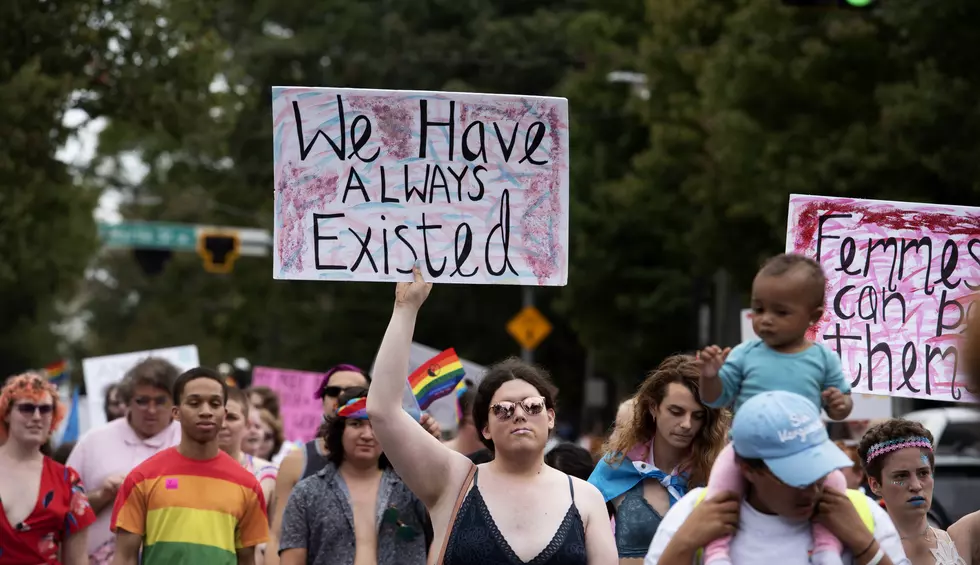
Non-binary, cisgender … 30+ LGBTQ terms cops in NJ will have to learn
Police officers in the state will be getting training in the next year on how to respectfully address LGBTQ people. Part of the training will involve familiarizing officers with the proper language to use and avoid.
For example, someone can be a transgender man — but don't call him "a transgender." Also don't say "sex change." And "tranny" and "he-she" are verboten.
The state Attorney General’s Office on Wednesday issued the LGBTQ Equality Directive, which, among other things, requires that officers address transgender people by their chosen pronouns and names. It also governs how people, depending on their identity, will be grouped and treated at police stations.
Included in the 14-page directive from Attorney General Gurbir Grewal are a list more than two dozen terms and definitions that cops will be expected to know in order to respect “the dignity of transgender, non-binary, and gender non-conforming individuals.”
The glossary is printed below in its entirety.
Chosen Name: A name selected by a person for themselves that is different from the name the person was given at birth. An individual may have chosen a new name for themselves that more accurately reflects their gender identity or expression.
Chosen Pronouns: The pronouns that a person chooses to use for themselves in line with their gender identity. For example, “she/her” for an individual who requests she/her pronouns; “he/his” for an individual who requests he/his pronouns; and “they/them” for an individual who requests they/them pronouns.
Cisgender: A person whose gender assigned at birth (sometimes referred to as sex assigned at birth) matches their gender identity. For instance, if a person was assigned female at birth, and self-identifies as a woman or girl, that person is cisgender.
Gender Assigned at Birth: The gender that someone was thought to be at birth, typically recorded on the original birth certificate. The gender someone was assigned at birth may or may not match their gender identity.
Gender Binary: A societal construction of gender that accords two discrete and opposing categories – male or female.
Gender Expression: A person’s gender-related appearance and behavior, whether or not stereotypically associated with the person’s gender assigned at birth. It is the manner in which a person represents or expresses their gender to others, such as through their behavior, clothing, hairstyles, activities, voice, or mannerisms.
Gender Identity: A person’s internal, deeply held knowledge of their own gender, regardless of the gender they were assigned at birth. All people have a gender identity, not just transgender people.
Gender Non-Conforming: A person whose gender expression does not conform to traditional gender expectations. Not all gender non-conforming people identify as transgender.
Gender Transition: A process during which a person begins to live according to their gender identity, rather than the gender they were assigned at birth. Gender transition looks different for every person. Possible steps in a gender transition may or may not include changing one’s clothing, appearance, and name, and in some cases, changing identification documents or undergoing medical treatments. The steps each person takes depend on their individual needs and access to resources.
Intersex: A person whose biological sex characteristics may not fit medical definitions of male and female. These characteristics may include, but are not necessarily limited to, internal reproductive organs, external genitalia, and sex chromosomes.
LGBTQ+: An acronym that represents lesbian, gay, bisexual, transgender, and questioning individuals. The Q may also stand for queer. As the plus sign shows, this list is not meant to be exhaustive, and as used in this Directive, the umbrella term also includes non-binary, gender non-conforming, and intersex individuals.
Non-Binary: A term often used by people whose gender is not exclusively male or female. The term also captures those with more than one gender or with no gender at all. Individuals whose gender is neither male nor female may use other terms to describe themselves, such as gender fluid, agender, bigender, or gender expansive.
Queer: A term that, although pejorative when used with intent to insult (historically and at present), is increasingly used by members of the LGBTQ+ community as a broad umbrella under which sexual and gender minorities may identify.
Questioning: A term some people use when they are in the process of exploring their sexual orientation or gender identity.
Sexual Orientation: A person’s romantic, emotional, or sexual attraction to members of the same or different gender. Common terms used to describe sexual orientation include, but are not limited to, straight, lesbian, gay, bisexual, and asexual. Sexual orientation and gender identity are different: gender identity refers to one’s internal knowledge of their gender, while sexual orientation refers to whom one is attracted.
Transgender: Refers to any person whose gender identity or gender expression differs from societal expectations associated with the gender they were assigned at birth. Being transgender does not imply any specific sexual orientation. This term is an adjective (“transgender person,” not “transgenders” or “transgendered”).
Transgender Man: A term for a transgender person who was assigned female at birth but identifies as a man.
Transgender Woman: A term for a transgender person who was assigned male at birth but identifies as a woman.
Prohibited terms
Of course, law enforcement officers must also avoid using terms that are designed to harm or offend individuals based on their gender identity or expression. To that end, law enforcement officers should avoid using:
Hermaphrodite: The preferred term is “intersex person.”
Sex change, pre-operative or post-operative: The preferred terms are “transition” or “transitioning.”
Transgender as a noun (transgenders” or “a transgender”) or as a verb (“transgendered”): Instead, the word is an adjective, as in “transgender person.”
Any slurs that demean LGBTQ+ individuals. The following offers a list of illustrative terms never to be used:
- she-male
- he-she
- it
- transvestite
- trannie/tranny
- d*ke
- f*ggot
- gender-bender

Sergio Bichao is deputy digital editor at New Jersey 101.5. Send him news tips: Call 609-359-5348 or email sergio.bichao@townsquaremedia.com.
More From New Jersey 101.5 FM









